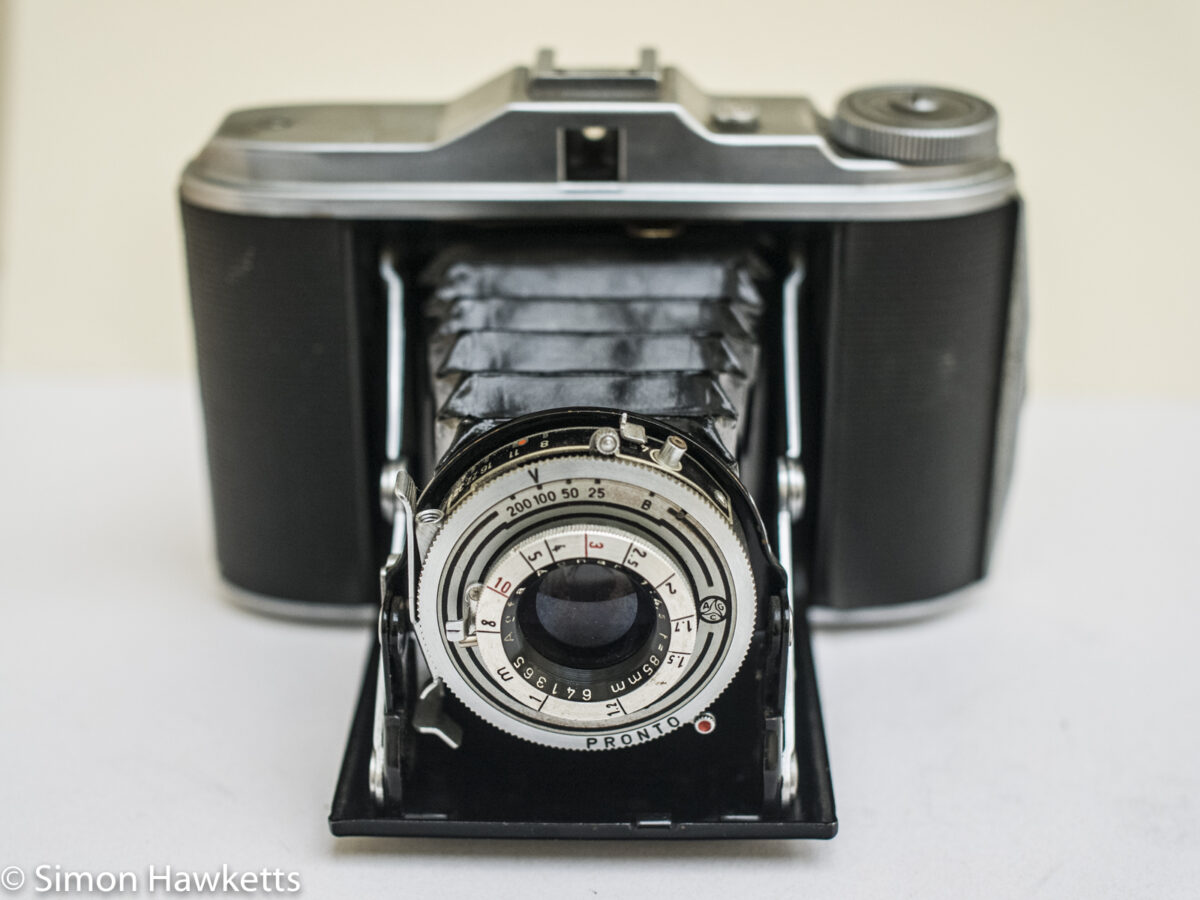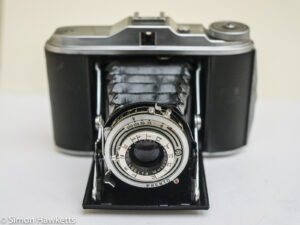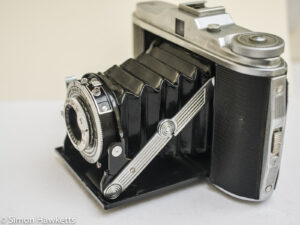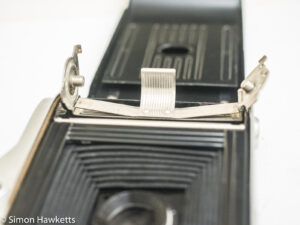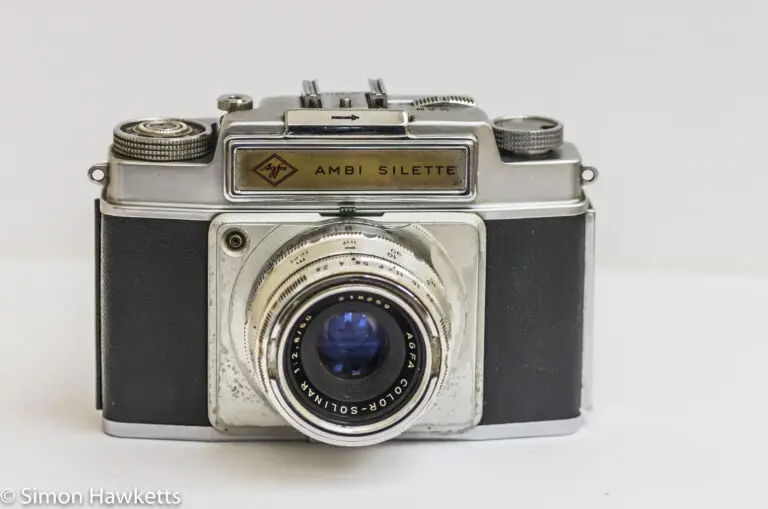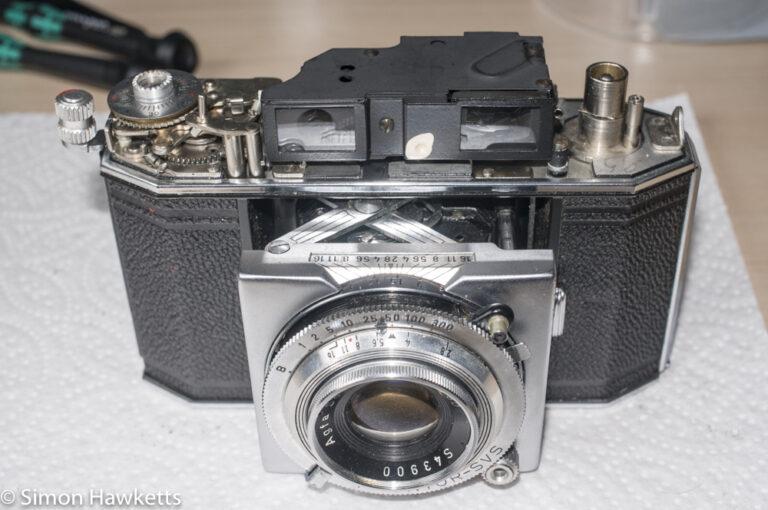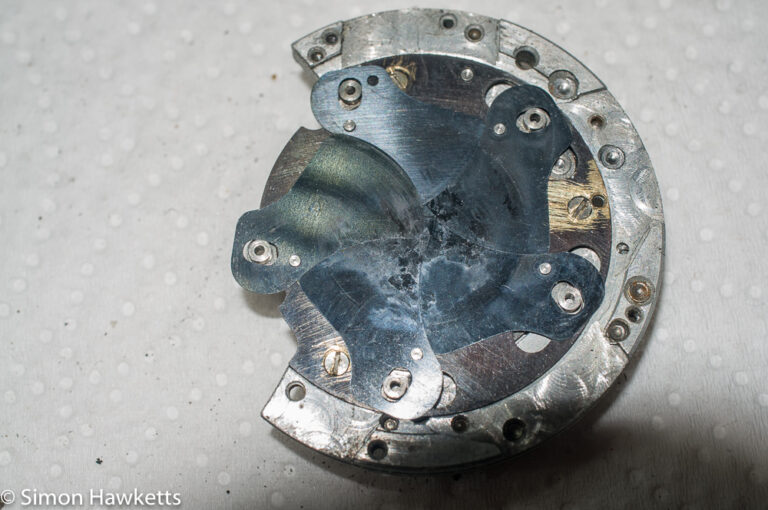Clean Agfa Isolette V (Jsolette) 120 camera
I’ve been thinking lately about the cameras my Dad used to collect, and I used to play with when I was a boy – quite a lot of them were box cameras and most of the rest were folding cameras. I suspect in that large collection he must have had an example of the subject of this post, which is an Agfa Isolette V.
My Agfa Isolette V Camera.
This is another eBay purchase which I found by doing a search for a ‘folding camera’ because I wanted to start to build up a collection of medium format cameras. I paid about £8 for this model, which is quite a low spec example of the Isolette range, but it does have a 4 speed shutter and an f/4.5 lens.
The camera was described as fully working with the bellows in ‘good’ condition. Having received it and examined it, I think that is an accurate description. Although it’s difficult to say before a film has gone through the camera, as far as I can tell the shutter works at all speeds, and they sound about right.
The aperture certainly adjusts smoothly, and examination of the bellows with a bright torch hasn’t found any light leaks yet.
There is a bit of a dent in the top plate next to the lens release button, and some marks and peeling of the leather work, but the lens springs out with some force and the struts instantly lock into position, so I think most of the functionality is OK.
There are some marks on both the front and back lenses which doesn’t come off with light cleaning – I’m not sure how much that will affect any pictures I take with it, but my experience is that the marks have to be pretty heavy to make any difference.
I’ve ordered some rolls of FP4 and some ID11 developer, so I can give the camera a proper test, which I’m quite looking forward to.
Folding Cameras.
Folding cameras were a step up from box cameras, with better quality lenses and more photographic control. They were also considerably smaller and lighter to carry about because they could be kept closed most of the time and only sprung open when a picture taking opportunity presented itself. Obviously, these advantages had to be paid for, so they tended to be more expensive to buy than a box camera.
The basic idea behind the folder is that the structure which fits between the lens and the camera body is made collapsible so that the camera can be folded up. Because the bellows which make up the folding element are very flexible, the camera can snap open quite quickly and be ready for use as required.
The downside of this flexibility is that the bellows become a weak point in the design and are often the first part of the camera to fail, with light leaks developing in the folds, especially at the corners.
Folding cameras were made to take a variety of different film types and sizes, and weren’t limited to a particular negative size, so it was possible to get one model of camera which took 8 pictures on 120 film with negatives of 6 cm x 9 cm and another model which took 16 pictures on the same film but with negatives of 6 cm x 4.5 cm.
Remember that at the time these cameras were popular it was usual to have contact prints made rather than enlargements, so the film size directly related to the size of the pictures you got back from the processing lab.
Pictures of the Agfa Isolette V
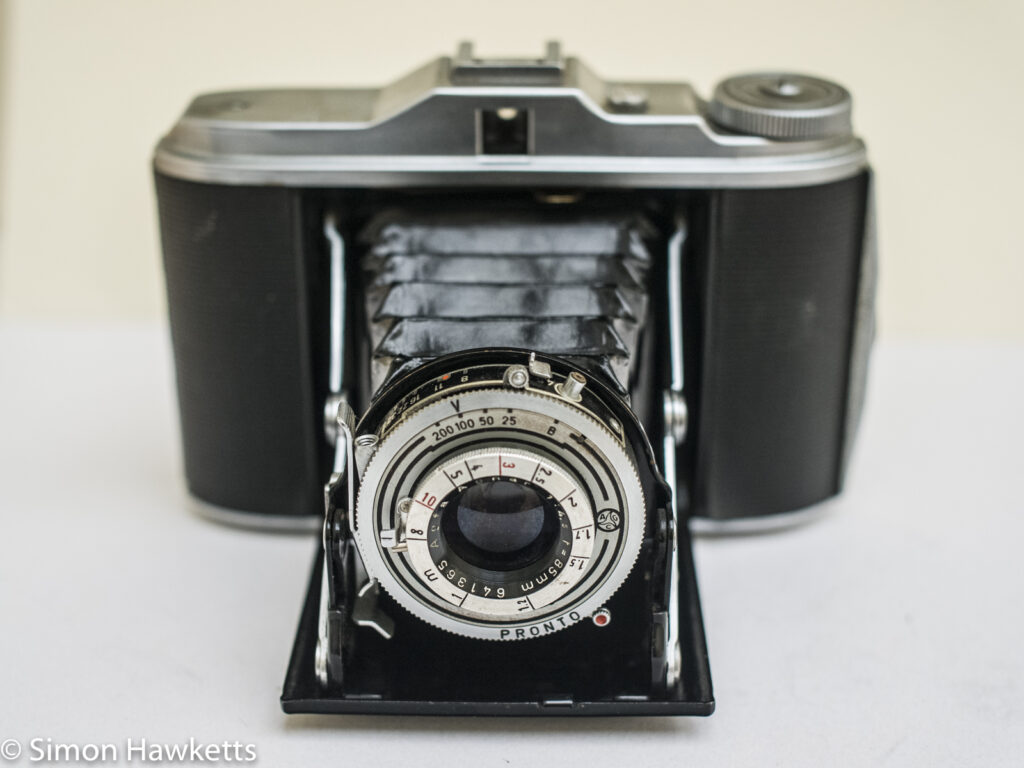
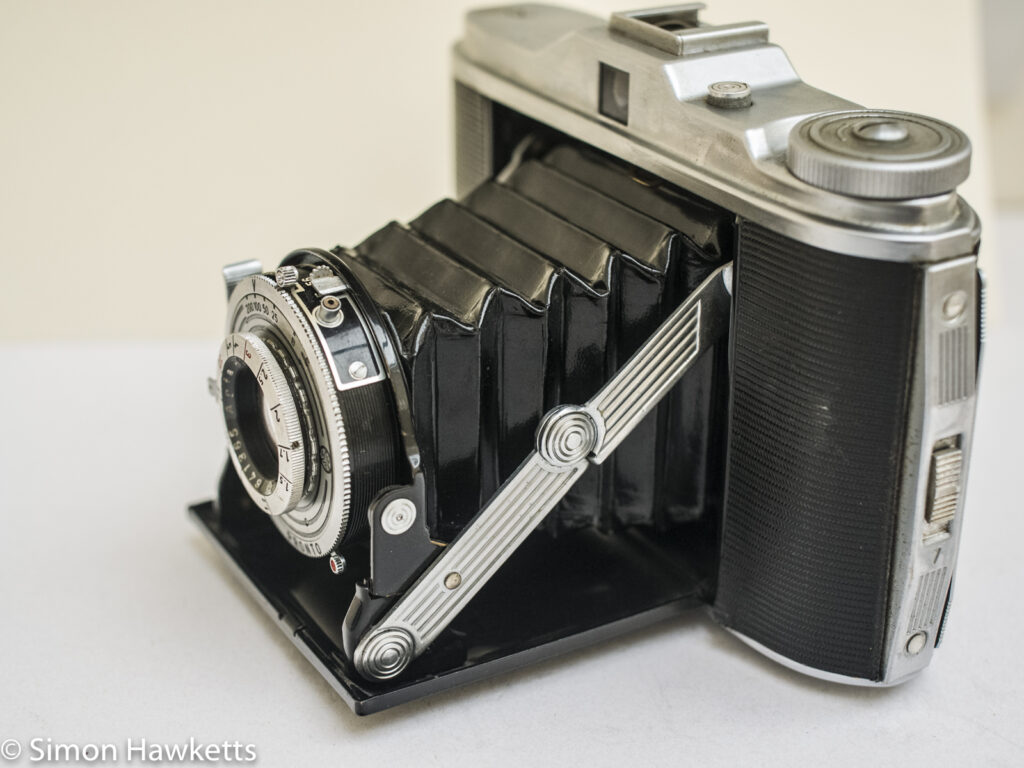

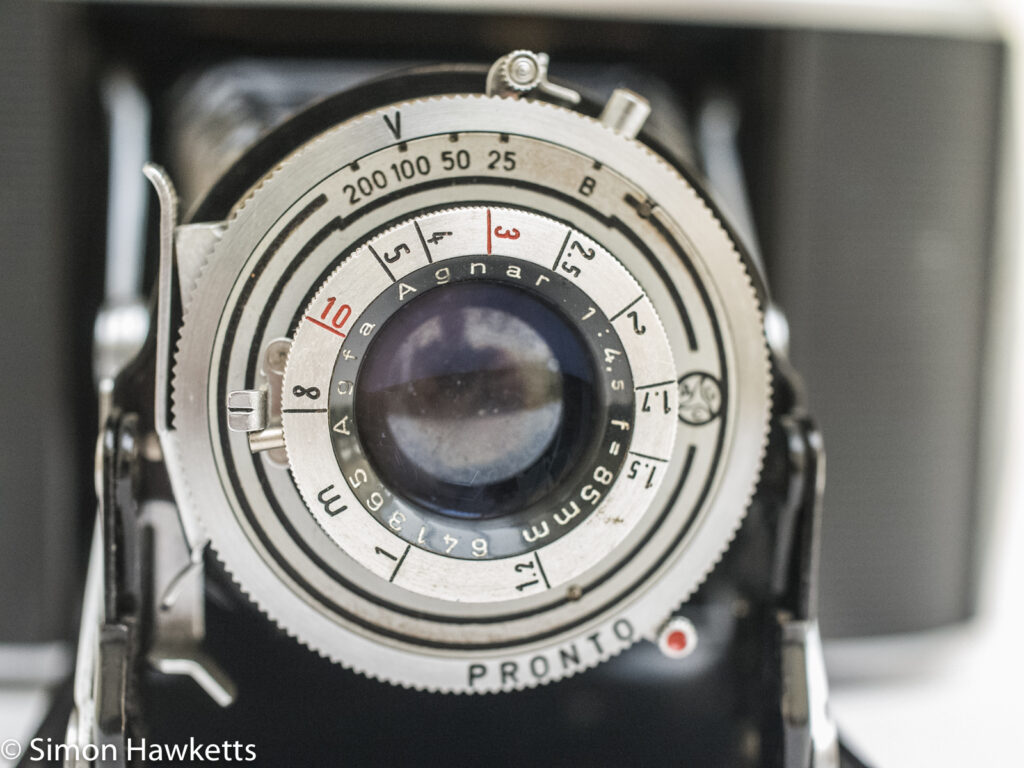
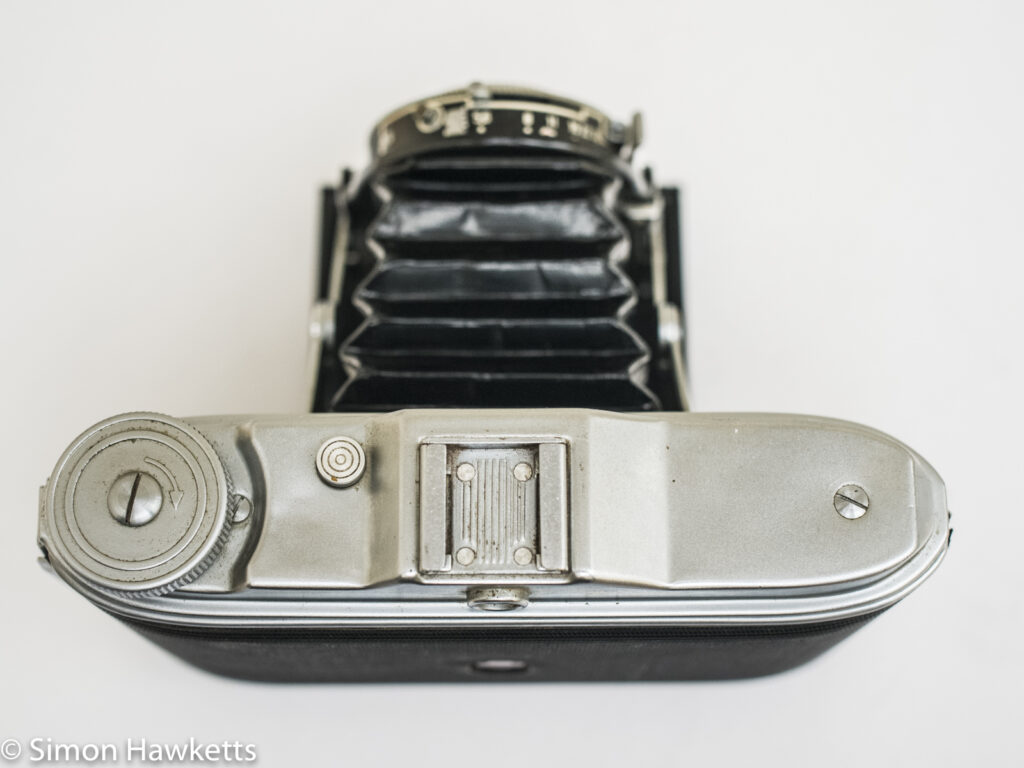
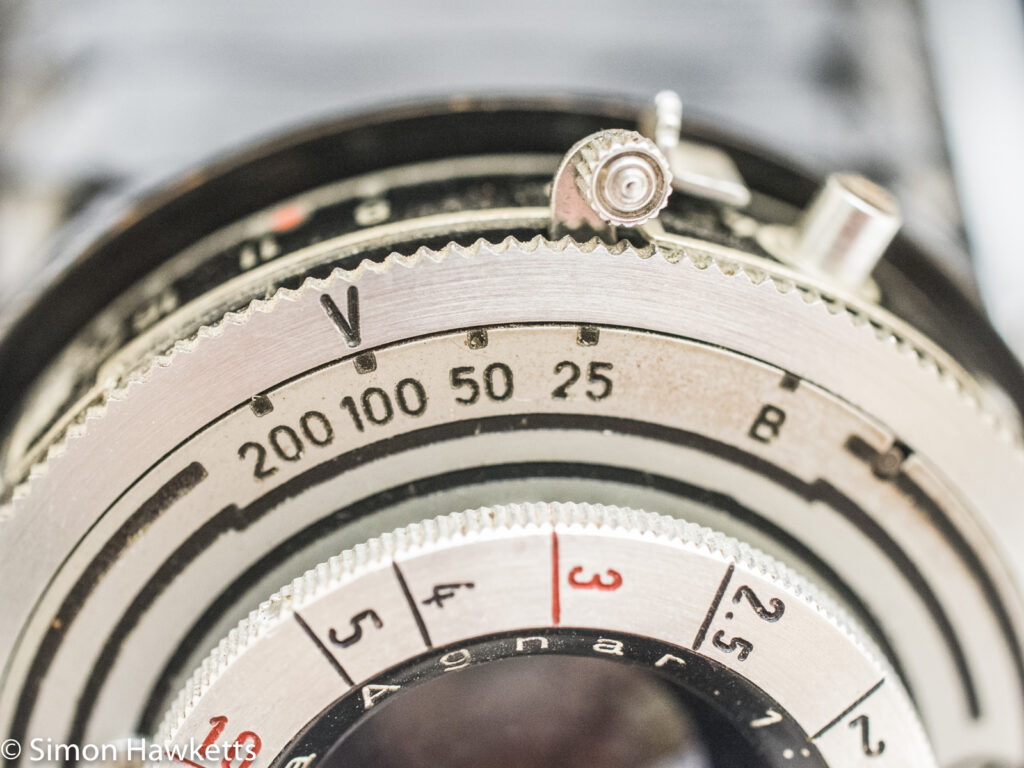

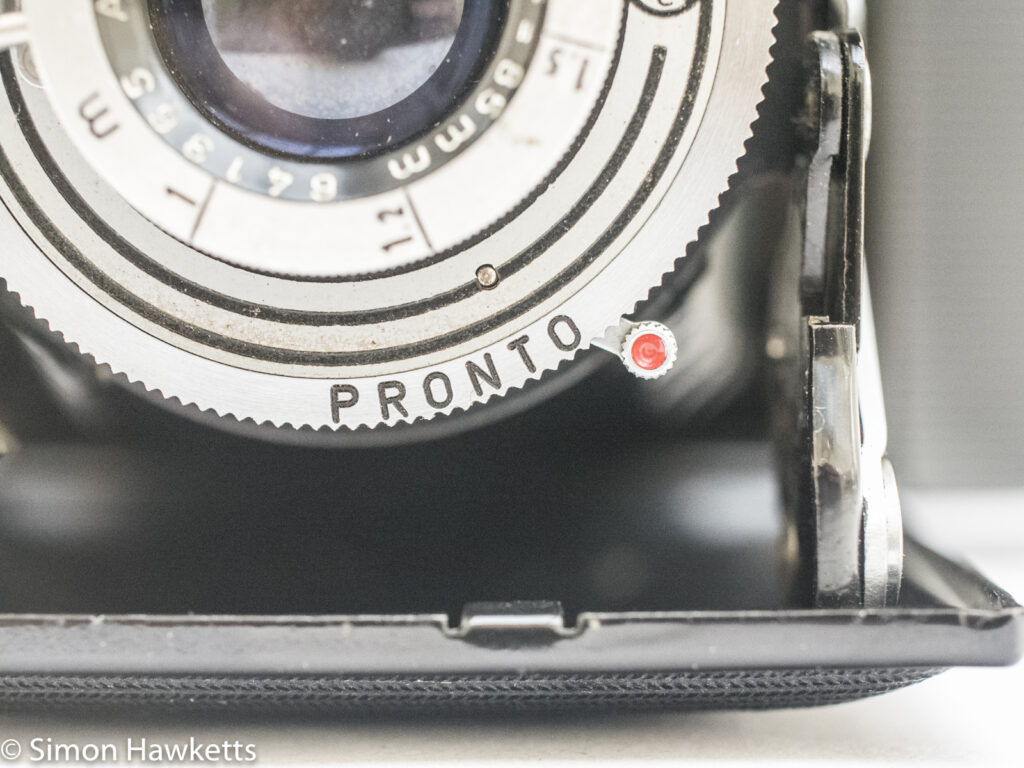
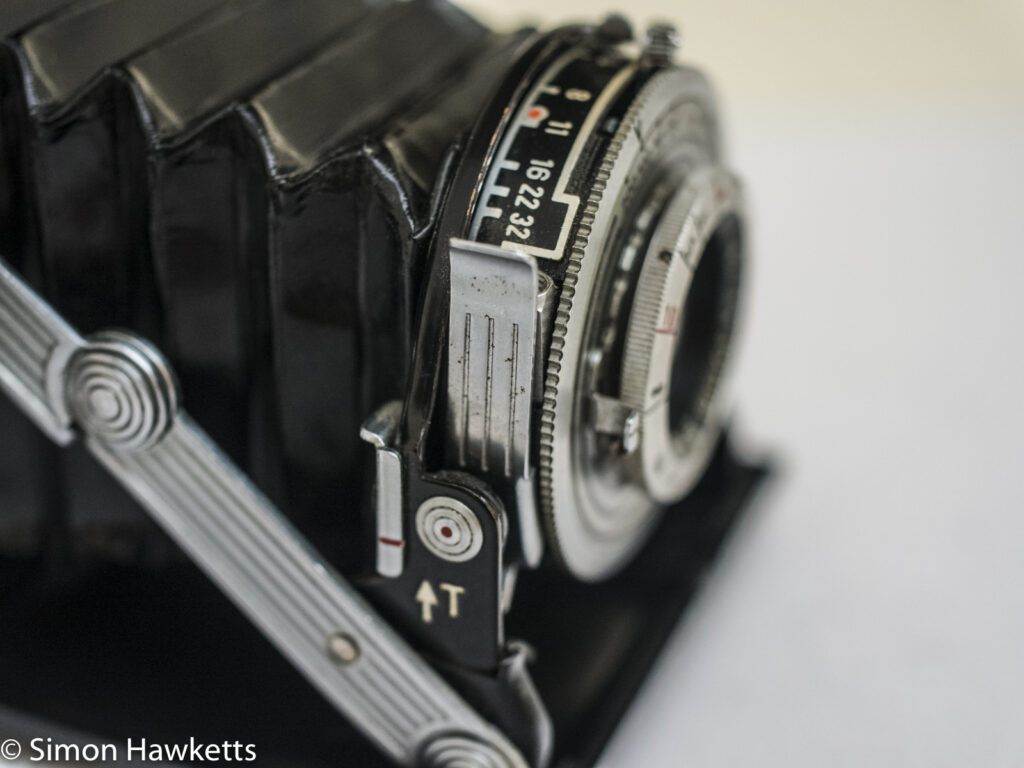
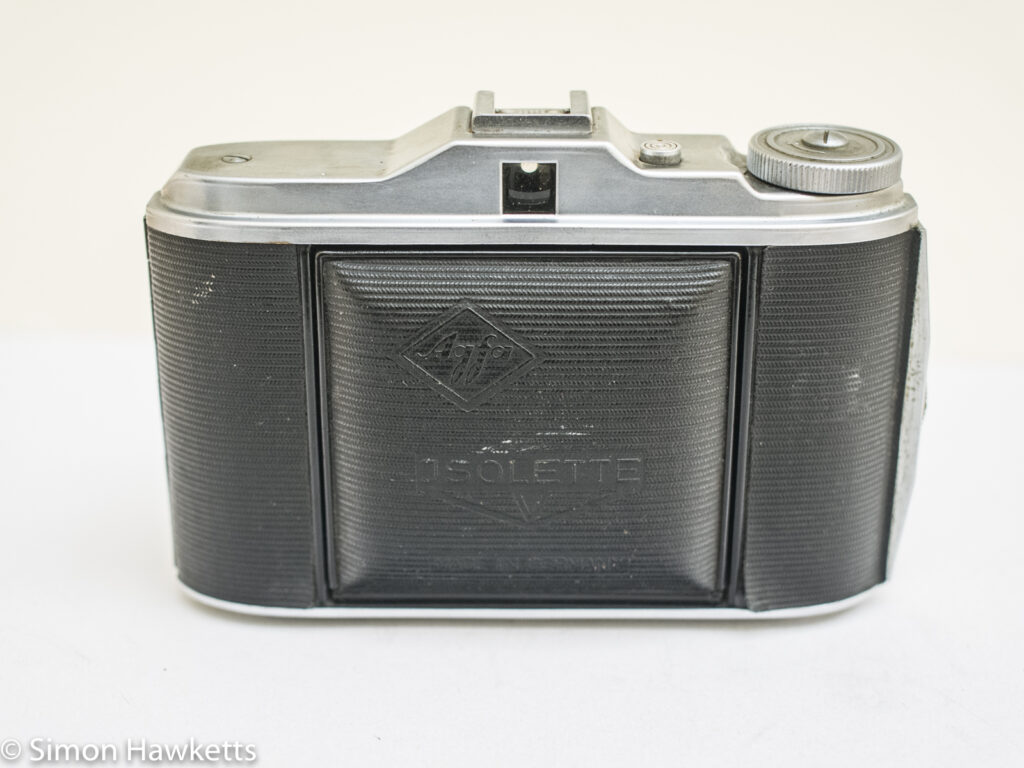
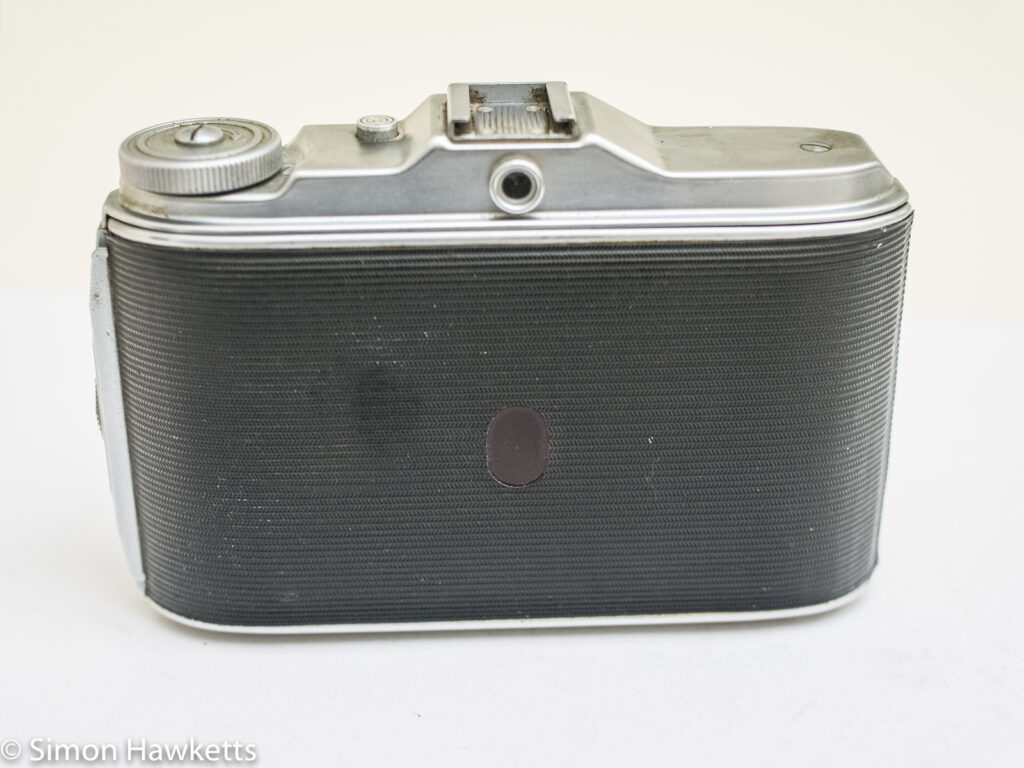
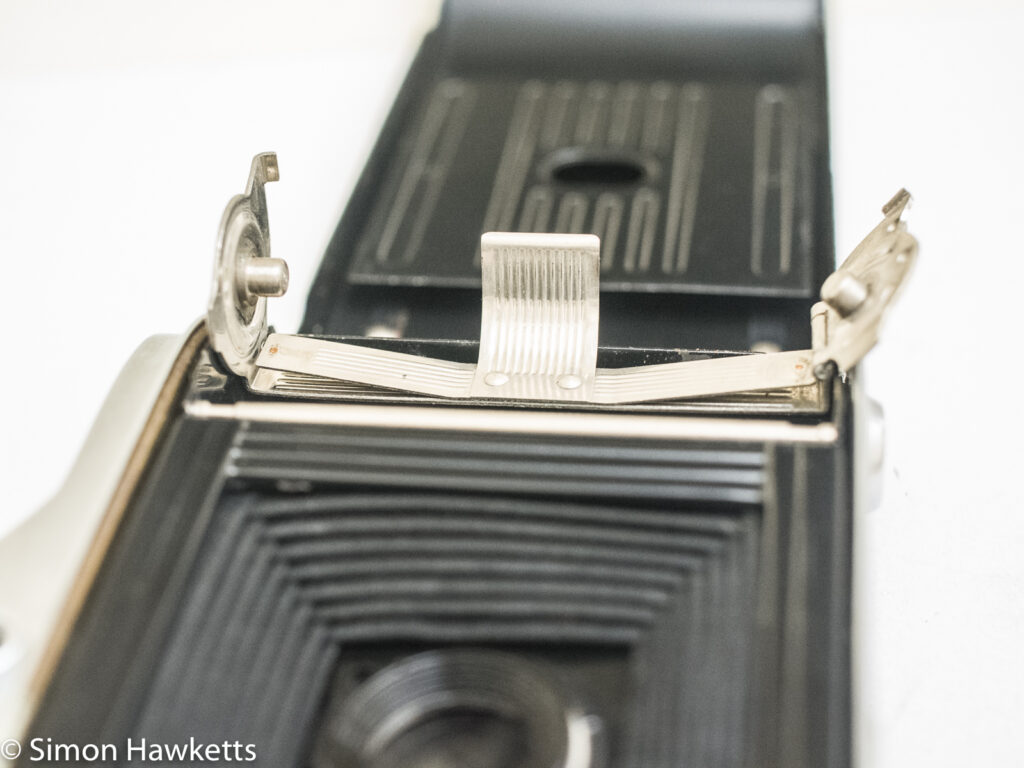
Agfa Isolette V Description.
As far as I can tell with Internet research, the fact that the lens cover has Jsolette written on it rather than Isolette makes the period the camera was made either 1937 or between 1946 and 1950. Apparently those were the only two periods when the name was written with an old German I (which looks like a J) on the lens cover. Since the lens cover says Jsolette V and the Isolette V was in production in 1950 I would suspect that is about the right age for it.
As I said above, the Agfa Isolette V is a low spec version of the Isolette range. The shutter is a Pronto 4 speed, the aperture covers a range of f/4.5 to f/32 and the focus range is from about 1M to infinity.
There is a flash sync socket fitted and a small lever which is supposed to hold the shutter open when set to B to allow for long time exposures. On my particular example, that lever doesn’t seem to work.
At the bottom 85 mm Agfa Agnar lens is a self-timer mechanism which seems to work, but I’ve only tried it once as the self-timer is a known problem area for any vintage camera.
Taking Pictures
The first part of taking any pictures with the Agfa Isolette V is to load a film in the camera.
The first thing I noticed is that the film appears to run backwards to someone who is used to 35 mm film. Looking from the back of the camera, the film is inserted on the right-hand side and is wound over to the left.
If there isn’t a reel in the left hand film chamber, one needs to be fitted. In most cases, there will be one on the right-hand side, so this can be transferred. Then the film support bar is swung out of the film chamber on the right-hand side and a roll of 120 film inserted into the holder.
Once it’s in and the backing paper unsealed, the support bar can be re-positioned in the camera body and the paper threaded into the spool on the left. It’s important to keep the roll of film tightly held on the spool until it’s properly loaded so light can’t leak in, and there are springs in the camera which help with this. Once all is secure, the back can be closed.
120 film has a backing paper which runs the full length of the film, and it has numbers on to indicate the frame being exposed. To get to the first frame once the back is closed, the film wind knob is turned until the number 1 appears in the small red window in the back of the camera.
There is no double exposure control with the Isolette, so it’s important to set a rule for yourself to avoid having double exposures or blank frames – either always wind on after a shot or always wind on just before.
To take pictures with the Agfa Isolette V you need to set all the parameters by hand. At the time the camera was popular, the majority of ‘snapshot’ photographers would have used the guide notes issued with the film to estimate the exposure, which basically meant they were using the sunny 16 rule. That is actually a fairly accurate way of making exposures and worked quite well.
To estimate the focus, more advanced versions of the Isolette had rangefinder focusing, but this model had no such luxury. It was possible to buy accessory rangefinders, but the majority of people would probably have estimated the distance by eye. To be honest, if the aperture was set to f/16 or f/11 which would have been quite likely with the slow shutter speeds available, the majority of the picture would be in focus anyway.
The last thing to remember once the shutter speed, aperture and focus were set was to ‘cock’ the shutter. This is also a manual operation using a small lever on the top of the shutter.
Of course, before any settings could be made and any pictures taken, the camera had to be opened by pressing the small button on the top plate. That released the lens cover and a couple of fairly powerful springs popped open the lens, and you were ready to go.
Once the whole roll of film had been exposed, the film is wound onto the take-up reel and then removed from the camera and sent for processing – on medium format cameras the film is wound to a different reel during exposure, it’s not rewound onto the original reel.
Agfa Isolette V Specs
- Agfa Isolette V 120 roll film camera
- Agfa Agnar 85 mm f/4.5 lens
- Shutter B + T + 1/25, 1/50, 1/100, 1/200
- Self-timer
- 12 exposures of 6x6cm each
- Flash sync socket on shutter
- Accessory shoe
- Hinge out film holder for easy loading
- Serial No: 641365
- Manufactured approx 1950
- Manual available on-line here.
Discover more from Everything Vintage
Subscribe to get the latest posts sent to your email.

